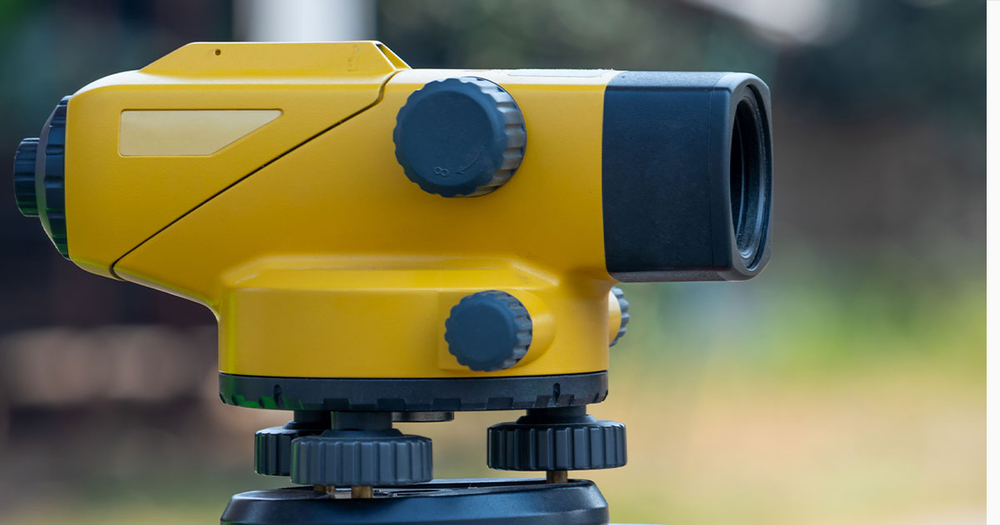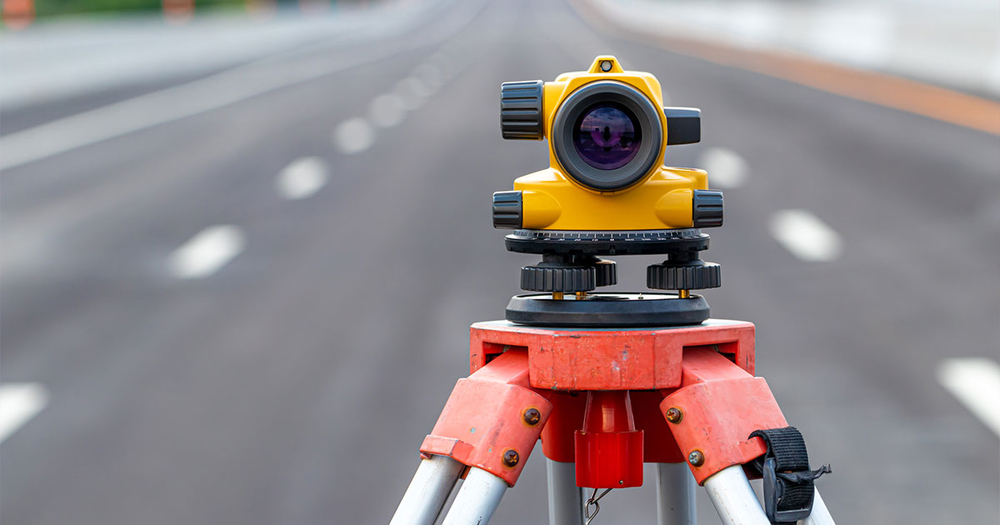
For contractors, hand and automatic levels are easy to use leveling tools that can provide extraordinary leveling accuracy between two or more points. Carefully comparing the differences in features, price, and operation between and hand and automatic levels can help contractors choose the best product for the job.
Hand levels, also called conventional or hand sight levels, are incredibly user-friendly and simple devices that can provide a rough leveling in no time. A hand level usually has the following components:
A hand level is usually used by land surveyors and contractors to approximate level or distance between a reference point and multiple points. A hand level is ideal for tasks that don’t require a precise measurement. Projects that are perfect for hand level use include:
An operator raises the hand level at eye level to look through its opening. Then, the operator will raise or lower the device until the bubble is centered, or leveled. Hand levels can also be placed on a flat surface for more accurate readings. Hand levels may also be used to estimate distances when used with a sighting rod.
Hand levels come in lightweight designs that are easy to carry around. Hand levels can feature magnification levels ranging between 18X and 32X with varying lengths in design and costs depending on their magnification capabilities.

Automatic levels offer the most cutting-edge technology for extremely accurate leveling. Also known as a self-leveling level, it has many of the same components that a hand level does except for one what makes all of the difference:
An automatic level’s compensator is an optical pendulum that uses gravity to maintain an accurate level line of sight and provides considerably greater accuracy over conventional leveling instruments.
In comparison to its conventional counterpart, an automatic self-leveling level has three leveling screws and a circular “bull’s eye” bubble. An operator begins by centering the bubble by turning one or two screws. They can also mount it on a tripod to avoid handling the screws.
On a mounted tripod, an operator can loosen the fastening screw and rotate the device until the bubble is centered. In a matter of seconds, the level can be set.
The level’s compensator self corrects and maintains that leveled horizontal line of sight. Minor bumps and vibrations won’t disturb the device. Compensators can readjust up to a certain point (ranging from 4 to 5 inches above or below the sighting point on the rod at 100 feet). Auto level magnification ranges from 18X to 32X.

So, which leveling device is right for you? The right type of instrument will depend on your budget, project type, and experience working with these devices. Consider the following factors when choosing between the different types of automatic and hand instruments:
Both types of devices offer incredible precision, but an automatic level can give you superior readings. A hand and automatic level with similar magnification can vary in accuracy. On top of its exactness, you have to consider that to continue getting accurate readings, a hand level requires frequent adjustment, while an automatic level's precision is automatically adjusted with the compensator.
A hand and automatic level differ in price, but both can be affordable for contracting professionals. If you're on a budget, there are auto levels that can be affordable. Levels can cost just a few hundred dollars to a couple of thousand or more for those with a full set of accessories.
While an automatic level can have a higher price tag, they can produce quick readings with fast set up time and minimal maintenance and labor costs. Over time, these savings in time can pay for themselves. In addition, investing in an auto level means its resale value won't plummet as much as a hand level would.
If you'll be investing in a high-quality instrument for your construction needs, consider the different types of accessories needed to make taking measurements a breeze:

Find a large selection of high-quality hand and automatic levels for land surveying and construction activities at Baseline Equipment.
We offer world class customer service and a deep knowledge of land surveying equipment. Our customer reviews on Shopper Approved speak for themselves. Feel free to reach out to us to find out more about our land surveying products and services.